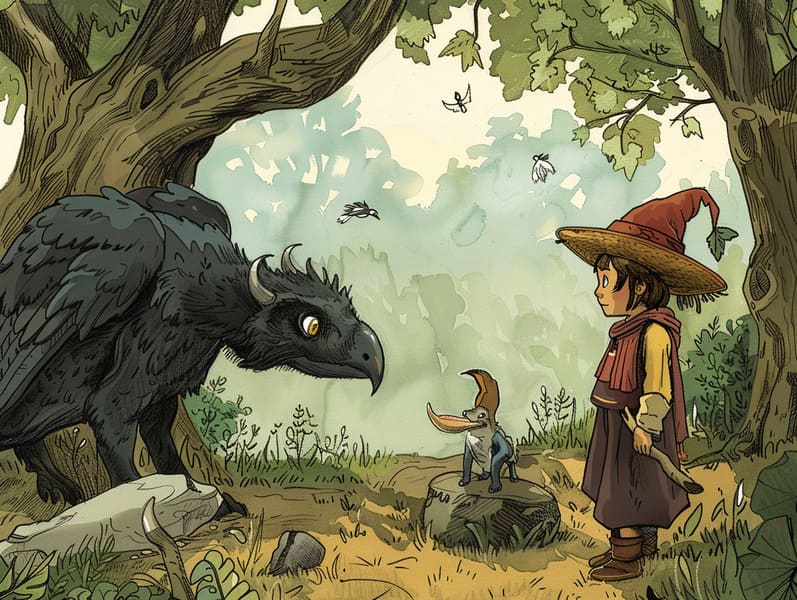Delving into the Background of Ancient Fairy Tales with Their Undying Charm.
Delving into the Background of Ancient Fairy Tales with Their Undying Charm.
Blog Article

Best fairy tales have legendary status. These narratives have been recounted from one generation to the next ages before they were ever documented. They sprang from a variety of civilizations, including Western traditions. They were initially shared among older generations, often carrying themes and messages mirroring the societal norms and beliefs of the time.
The Brothers Grimm, Jacob and Wilhelm Grimm, were among the first to gather and publish many of these beloved narratives. Their collection, "Grimm's Fairy Stories," included stories like "The True Bride," "Little Brother and Little Sister," and "The True Story of Snow White," which have since become cornerstones in the world of traditional fairy tales. Similarly, Andersen's delightful tales, such as "The Mermaid's Tale," and "The Little Duckling," have floated into hearts worldwide, solidifying their place in the pantheon of treasured fairy tales.
Despite their historical roots, classic fairy tales remain as impactful as ever, especially as children's night stories. These whimsical stories are now available in diverse formats, including vividly illustrated books, charming animations, and online fairy tales.
Their lasting presence can be linked to several captivating elements:
Moral Lessons: Ancient fairy tales often whisper important moral lessons. Tales like "The Story of the Boy Who Cried Wolf" teach the merit of truthfulness, while "The Story of the Tortoise and the Hare" illustrate the traits of perseverance and modesty. These narratives offer the young clear distinctions between ethical and unethical, building their moral compass in a mild yet important way.
Compassion and Knowledge: Fairy tales frequently involve individuals facing challenges and struggles, inspiring listeners to empathize with their struggles and cheer for their triumphs. For instance, "Beauty's Beast" points out the significance of seeing beyond the surface to know the true nature of a individual, cultivating understanding and perception.
Cultural Insights: Many traditional fairy tales are imbued with the cultural contexts from which they originated. Exploring these tales can provide informative snapshots into different backgrounds, advancing a sense of global awareness and understanding.
Fantasy and Imagination: The enchanted elements in timeless fairy tales—fairy godmothers—trigger children’s creative dreams. These stories carry readers to magical realms, engendering inventive thinking and a sense of curiosity that endures a here lifetime.
Traditional fairy tales are not only delightful but also pedagogical. They function as enchanted tools in fostering various mental and emotional abilities in young readers. When classic fairy tales are voiced, they develop speech development by introducing new terms and meanings and complicated sentence structures. This practice also develops listening abilities and attention, as kids concentrate deeply, expectant to see what happens next.
Furthermore, conversing about the themes and characters of fairy tales can sharpen thought processes and logical thinking. Young readers are led to notice patterns, guess what will happen, and grasp cause and effect. These talks also help the young express their thoughts and feelings, cultivating their emotional intelligence.
In today’s technological age, the accessibility of web-based fairy tales has made these tales more acquirable than ever. Web-based platforms and digital apps share ample collections of famous fairy tales that can be enjoyed or listened on anytime, anywhere. Fairy tales voiced are particularly common, presenting an fascinating method for the young to experience these magical stories. Audiobooks and narrated videos take characters and settings to life, often accompanied by entrancing music and instrumentals that improve the tale experience.
The timeless appeal of ancient fairy tales lies in their ability to shift to modern society while retaining their key morals. Contemporary updates of these tales often bring in more inclusive figures and modern settings, making them pertinent to today’s audience. However, the key lessons of valor, charity, and justness remain unchanged, continuing to touch young listeners of all ages.
Classic fairy tales also offer a sense of familiarity and homeliness. They distribute a organized narrative with a apparent beginning, middle, and end, often coming to a close with the culmination of conflicts and the triumph of virtue over vice. This steadiness can be placating for young readers, making available a sense of sturdiness in an unstable world.
Ancient fairy tales continue to captivate and educate new generations, maintaining their charm and relevance in modern society. As children's night stories, they present a perfect blend of delight and instruction, boosting moral values, empathy, and creativity. The existence of digital fairy tales and the commonness of fairy tales recited guarantee that these traditional narratives remain available to new generations.
By conserving and circulating these fairy tales, we continue to appreciate the rich tapestry of cultural legacy and cultural heritage. Whether you are perusing a artistically illustrated book, discovering a internet collection, or listening via an read-aloud story, the loveliness of popular fairy tales is always within reach. These fairy tales point out of the immortal effect of tales and its ability to hold us together across time and space.
Whether you are accessing a richly illustrated book, delving into a electronic collection, or listening via an voice book, the mystique of ancient fairy tales is always within reach.
These tales teach us of the consistent essence of tales and its ability to unify us across centuries and lands, casting a charm that delights and instructs alike.